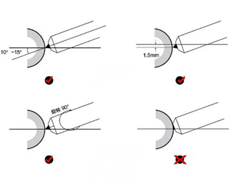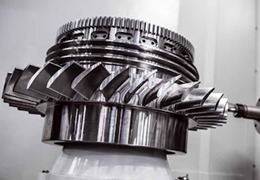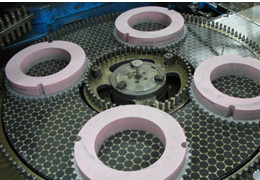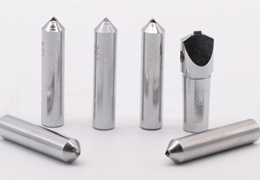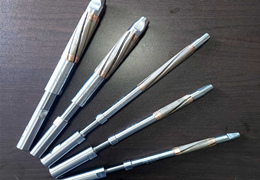Iron and carbon alloy with a carbon content greater than 2.11 is called cast iron. Although cast iron has poor strength, plasticity and toughness and cannot be wrought, it has a series of performance characteristics such as excellent castability, friction reduction, cutting and processing, etc. Coupled with its simple production equipment and process and low price, it is widely used in the mechanical manufacturing (such as for the manufacture of parts such as beds, frames, boxes and bearing housings), petroleum, chemical, metallurgical, mining, transportation, defense industry, etc.
According to statistics, according to the weight percentage calculation, in agricultural machinery in the cast iron parts accounted for about (40 ~ 60); cars, tractors accounted for about (50 ~ 70); machines accounted for about (60 ~ 90). Especially in recent years due to the development of rare earth magnesium ductile iron casting, more further break the boundaries of the use of steel and cast iron, many of the important parts made of carbon steel and alloy steel, such as crankshafts, connecting rods, gears, etc., now can be used ductile iron casting to produce "iron instead of steel", "cast instead of forging ".
Classification of Cast Iron
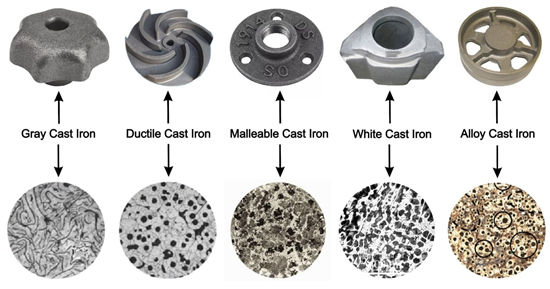
Types of cast iron and processing characteristics of cast iron can be classified according to its classification; gray cast iron, white cast iron, malleable cast iron, ductile cast iron, creep cast iron, alloy cast iron, etc. Among them, gray cast iron is widely used in the automotive industry, and the automotive industry is a large demand for CNC tools, so the processing plant often has a demand for gray cast iron processing.
1. white cast iron (white cast iron).
Due to the presence of a large amount of hard and brittle Fe 3C, high hardness, brittleness, very difficult to cut processing. It is seldom used for the direct manufacture of machinery, and is mainly used as a raw material for steelmaking or for the manufacture of billets for malleable cast iron.
2. gray cast iron (gray cast iron).
Gray cast iron (abbreviated as gray iron) is the cheapest and most widely used type of cast iron, accounting for more than 80 percent of the total content of all types of cast iron.
Most or all of the carbon in cast iron exists as free state flake graphite. The fracture is gray in color. It has good casting properties, good machinability, vibration damping, good wear resistance, and is widely used in the manufacture of complex structural load-bearing castings and wear-resistant parts due to its simple melting ingredients and low cost.
Gray cast iron has been one of the main raw materials for the automobile manufacturing industry, it is used to manufacture various parts, including engine blocks, cylinder heads, differential cases, shafts, flywheels, brake drums and brake discs, etc.
3. malleable cast iron (malleable iron ).
It is obtained by annealing a certain percentage of white cast iron by graphitization, in which most or all of the carbon is present in the form of agglomerated graphite, and is customarily called malleable cast iron because of its much higher plasticity and toughness than gray cast iron, but in fact it cannot be malleable.
4. nodular cast iron. The iron is spheroidized before casting, and most or all of the carbon in it is in the form of spherical graphite, which has high mechanical properties and a simpler production process than malleable cast iron.
Depending on the composition of the matrix, three types of ductile iron are commonly used: ferritic ductile iron, ferritic-pearlite ductile iron, and pearlite ductile iron.
Pearlescent spheroidal iron is often used in the manufacture of crankshafts, connecting rods, camshafts, machine spindles, hydraulic cylinders, cylinder liners, pistons, etc. Ferritic ductile iron is used in the manufacture of pressure valves, seats, rear axle housings of automobiles, etc.
Application of ductile iron:
1. instead of steel, some important parts are made, such as crankshaft, gear, connecting rod, camshaft, etc.
2. instead of gray cast iron, box-type parts and pressure vessels with high strength requirements are made. Example 1, ferritic ductile iron commonly used in the manufacture of pressurized valves, machine bases, reducer shells, etc. Example
3. pearlite ductile iron commonly used in the production of automobiles, tractors, crankshafts, connecting rods, camshafts and machine tool spindles, worm gears, rolling mill rolls, cylinder liners, pistons and other important parts; Example
4. under the bainite ductile iron can be manufactured for automotive tractors, worm wheels, bevel gears, etc..
5. worm cast iron. Carbon exists in the form of worm-like graphite, between flake and spherical graphite, is a new type of cast iron developed in recent decades.
Grinding Solutions for Cast Iron:
1. Cast Iron Cutting Disc - Vacuum Brazed Wheel
.jpg)
Vacuum brazed saw blades have continuous type and segment type. They are used for cutting Marble, cast iron, Ceramics tiles, hard composite materials such as concrete with rebar, Metal processing, Fiber Glass and PVC pipe, etc
Advantages Of Vacuum Brazed Diamond Saw Blades
* Single Layer Of Fully Exposed Diamond Fused With Nickel At High Temperatures And Sharp Cutting
* Small cutting gap and less chipping
* Up To 40 Times Longer Life Time Than Resin Grinding Disc. the efficiency is improved by 100% for cutting FRP slab
* Higher Quality Process Than Sintered or Laser Welded Diamond Wheel. The efficiency is improved by 35% for cutting marble slab
* No Pollution, Low Noise ,Never Need Dressing
With a global development strategy and comprehensive multilingual business departments, Moresuperhard keeps an eye on the latest developments in the global grinding industry and is committed to providing high-quality and efficient grinding products and services to our customers worldwide! We also accept customized orders to suit your needs.
If you have any questions about
the grinding solutions in cast iron, please feel free to contact us! You can leave us your questions below, and we will contact you as soon as possible!


.jpg)
